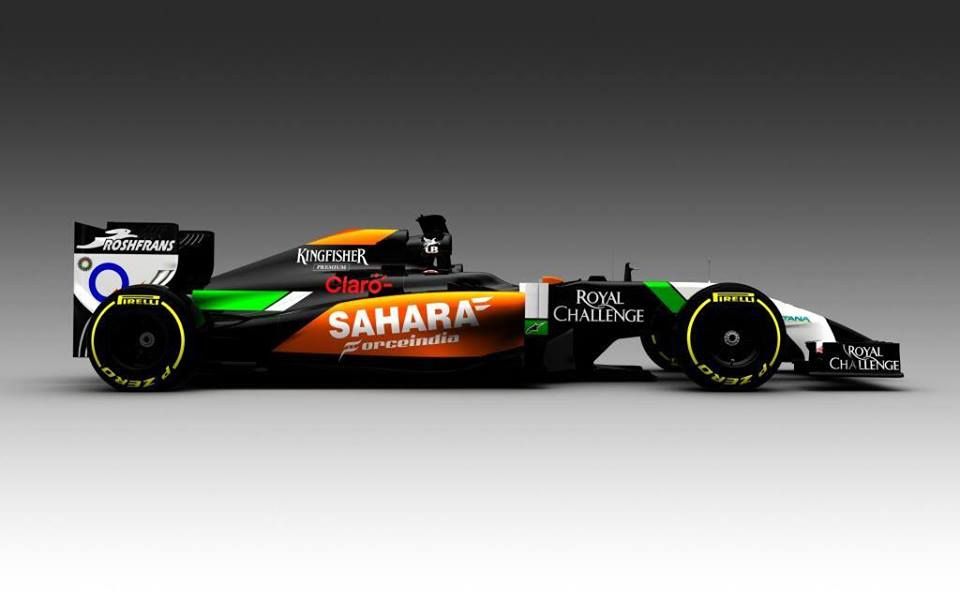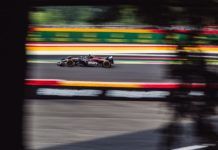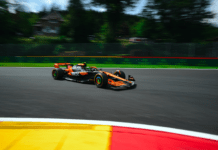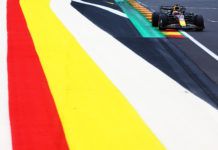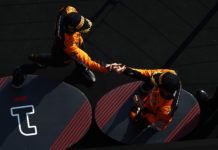The 2014 Formula One season will be the 65th season of the Formula One World Championship, Teams and drivers will compete in nineteen Grands Prix for the World Drivers’ and World Constructors’ Championships.
In 2014, the championship will see the introduction of a revised engine, the 2.4 litre V8 engine (used between 2006 and 2013), will be replaced with a new formula specifying a 1.6 litre turbocharged V6 engine that incorporates an energy recovery system into its build, called Power train.
The 2014 calendar will feature substantial revisions from the 2013 season. The Russian Grand Prix will be held for the first time at the Sochi International Street Circuit in Sochi, and the Austrian Grand Prix will be revived at the Red Bull Ring in Spielberg. The Indian Grand Prix will be discontinued for one year ahead of a move to an early-season date in 2015, whilst the Korean Grand Prix has been removed.
Sebastian Vettel will start the season as the defending Drivers’ Champion after securing his fourth consecutive title at the 2013 Indian Grand Prix. His team, Red Bull Racing, will start the season as the defending Constructors’ Champions, having also won their fourth consecutive championship in India.
Regulation changes
Technical regulations
The 2014 season will see the introduction of a new engine formula, with turbocharged engines returning to the sport for the first time since 1988. The new engines will be a 1.6 litre V6 format with an 8-speed semi automatic gearbox. The rules dictate the use of a ninety-degree engine bank, with fixed crankshaft and mounting points for the chassis, while the engines will be limited to 15,000rpm. Individual engine units under the 2014 specifications must last for at least 4,000 km (2,500 mi) before being replaced, in comparison to the pre-2014 engines, which were required to last for just 2,000 km (1,200 mi).
The Kinetic Energy Recovery System (known from 2009 to 2013 as KERS, and renamed from 2014 as ERS-K) will be incorporated into the design of the engine and its usage increased; its function as a supplementary power source will be taken by the introduction of the heat-based Energy Recovery System (ERS). The ERS unit captures waste heat as it is dispelled from the exhaust turbocharger, using an electrical device known as a Heat Motor Generator Unit. This waste heat is stored as an electrical charge until it is utilised by a complementary system called the Kinetic Motor Generator Unit. This device is connected directly to the drive train to deliver the additional power in the most direct and efficient way. In combination with the ERS-K it will give drivers an additional 161 bhp (120 kW) for thirty-three seconds per lap, compared to the KERS units used prior to 2014, which gave drivers 80 bhp (60 kW) for six seconds per lap.
Teams will be permitted to use electronic braking devices to manage the braking of the rear wheels as the increased power output from the ERS-K units will make regulating the brake bias much harder than it had been previously.
The 2014 regulations require the use of lower noses than in previous years, in the interests of safety. The tip of the nose will have to be no more than 185mm above the ground, in comparison to the 550mm allowed in 2012. These regulations were amended in June 2013 so as to completely outlaw the use of the “stepped noses” used in 2012 and 2013, thereby forcing teams to design a car with a genuinely lower nose rather than using the temporary solution.
The original rules—first published in August 2011—also called for a variety of bodywork changes aimed at cutting downforce, most notably through the use of narrower front wings, and a shallower angle to the main plane of rear wings. These additional changes were formally abandoned in December 2012, but the requirement that cars be built with a nose no more than 185mm above the ground was retained. The planned reduction in front wing width from 1,800mm to 1,650mm was subsequently reintroduced.
In order to promote fuel efficiency, fuel will be flow restricted to 100 kg/h above 10,500rpm; below 10,500rpm a formula for the maximum flow must be applied based on the rpm in use.
The position of the exhaust outlet will change so that it is now angled upwards toward the rear wing instead of downwards to face the rear diffuser so as to make the practice of using exhaust blown diffusers—passing exhaust gasses over the rear diffuser to improve the car’s downforce—extremely difficult to achieve.
The minimum weight of the cars will increase from 642 kg (1,420 lb) to 690 kg (1,500 lb).
The use of false camera mountings will be banned. Teams had previously exploited a loophole in the regulations that allowed them to add additional pieces of bodywork to the car in the place of camera mountings and take advantage of the aerodynamic benefits. From 2014, this loophole will be closed, with the regulations rewritten to only allow camera mountings to be used for cameras.
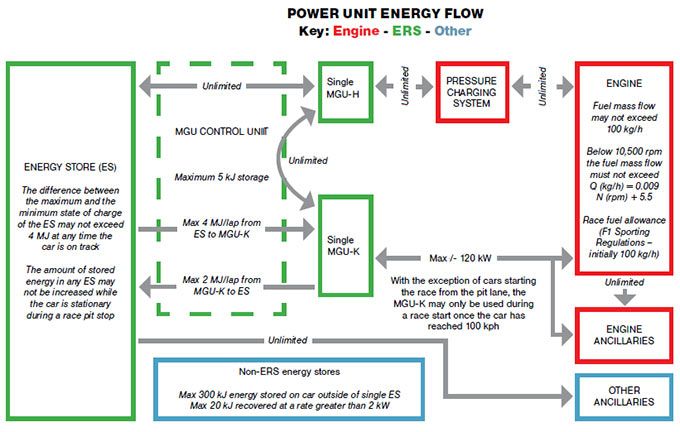
All the main technical changes:
Engine – it’s out with 2.4-litre normally-aspirated V8 engines and in with 1.6-litre V6 turbo engines, revving to a maximum of 15,000rpm. The current engines produce more than 750bhp, whilst the 2014 units will produce around 600bhp with additional power coming from Energy Recovery Systems (see below).
Gearbox – gearboxes are to have eight forward ratios – rather than the current seven – which each team must nominate ahead of the season.
Energy Recovery Systems (ERS) – in 2014, a larger proportion of each car’s power will come from ERS which, together with the engine, make up the powertrain or power unit. As well as generating energy under braking, ERS units will also generate power using waste heat from the engine’s turbocharger. Unlike the current KERS – which give drivers an extra 80bhp for six seconds per lap – the 2014 ERS will give drivers around 160bhp for 33 seconds per lap. To compensate for the extra power being generated under braking by ERS, teams will be allowed to use an electronic rear brake control system.
Fuel – to promote fuel efficiency, fuel will be limited to 100kg per race. At the moment fuel is unlimited, but teams typically use around 160kg per race.
Minimum weight – to compensate for the increased weight of the 2014 powertrain, minimum weight has been increased from the current 642kg to 690kg.
Exhaust – unlike today where two exhaust tailpipes are used, the 2014 regulations mandate the use of a single tailpipe which must be angled upwards to prevent the exhaust flow being used for aerodynamic effect. Additionally, bodywork is not allowed to be placed behind the tailpipe.
Nose height – for safety reasons the height of noses will be reduced in 2014. The maximum height is currently 550mm, whereas next year it’s 185mm.
Front wing – front wings will be a little narrower next year with the width reduced from 1800mm to 1650mm.
Rear wing – the rear wing will also look a little different in 2014 compared to this year’s models. The lower beam wing is being outlawed and the main flap will be slightly shallower in profile.
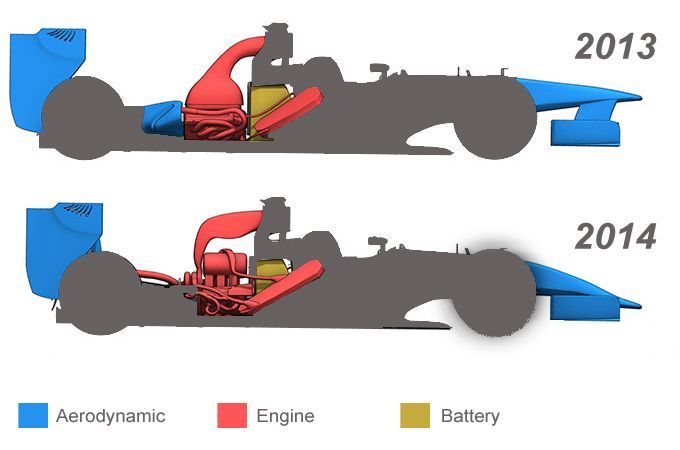
In the next Chapter will explain the new Sporting regulations and the new engine “Power Train”.
Stay with us!

